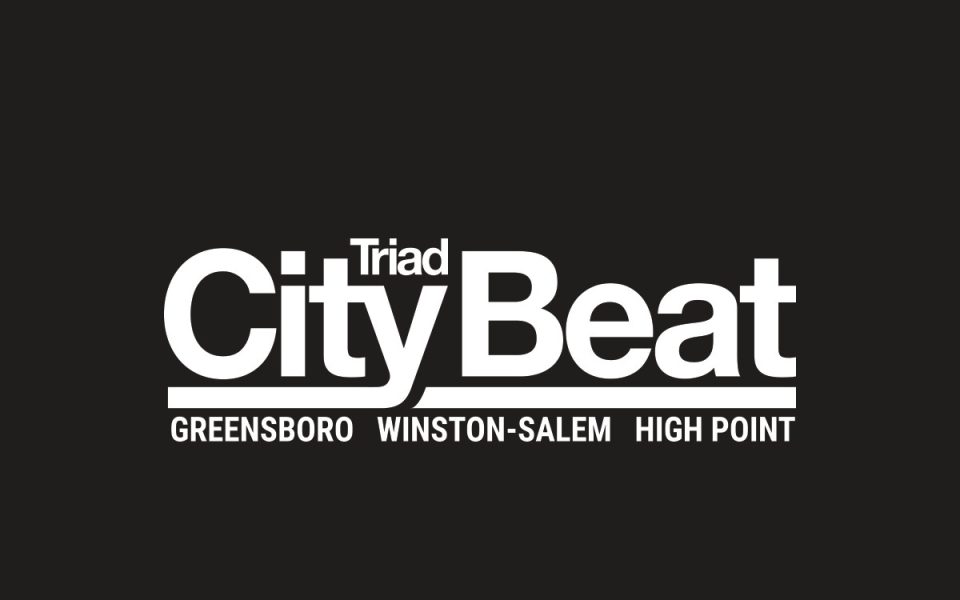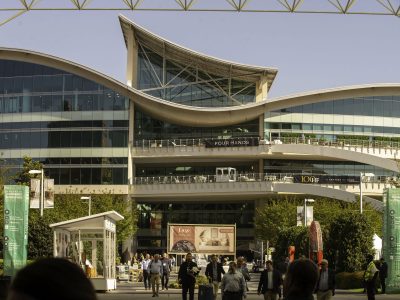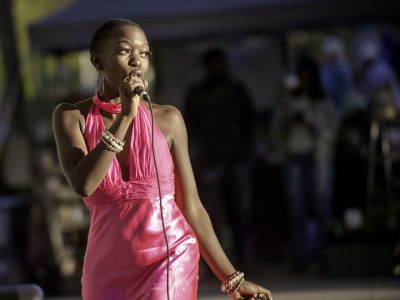by Eric Ginsburg
What began a relaxed, latent energy at the Noche Caribeña cultural showcase started simmering as more people arrived, sizzling as two couples cautiously began dancing in front of the live band. Within minutes, an electricity shot through the room, propelled by the bass, conga, vibraphone and harp of the Caribbean grooves, and a larger mass of people spilled onto the dance floor.
The vibrancy of colors — visible in people’s clothing, Latin American flags and even the bluish hue of the floor at Studio B — accentuated the attendees’ colorful enthusiasm. Beers clinked, plates were emptied and friends embraced.
People mingled and enjoyed complimentary Caribbean food as local band Soños cleanly laid out original work and covers of standards like “Guantanamera.” Five visual artists of Caribbean-American descent whose work adorned the walls mingled with the crowd, but Rafael Osuba made sure to keep circling back to the corner near his art.
Osuba, whose parents still live in Puerto Rico, recently returned to making art after 23 years as an advocate for Latino artists.
“This gives me the ability to connect to my culture,” he said, adding that his art is an outlet for his yearning for Puerto Rico.
Osuba, who lives in Raleigh, said that each of his pieces holds specific cultural and personal meaning, from a stylized painting of güros — a Puerto Rican percussion instrument his father played— to more fluid paintings of dancers.
“It has its own rhythm, its own pulse,” he said of pieces of dancers, the pride in his heritage evident in his excited tone as he described that the subjects would be dancing to music much like what the band was rolling out behind him.
Osuba makes his pieces on a digital tablet, but is actually painting and layering his creations as a traditional painter would. His approach was born out of necessity — Osuba lacked space to really move while painting, let alone store completed works. Technology offered a solution, but also has its drawbacks.
“There’s something about really working the brush…. To be able to capture that loose, free feeling takes a bit of work,” he said.
His paintings — be they of a proud rooster symbolizing machismo, a landscape or musicians — vary significantly in style but maintain a bold color palette. Osuba printed a few of the ones one display on acid-free paper, the linen adding texture, and some others on stretched canvas.
 Other artists’ work displayed at the Noche Caribeña event showcased dexterity too, the most significant being pieces by Venezuelan Jose Rafael Rodriguez. His steel sculpture, “Cuadrante,” stood in front of his large expressive landscape paintings. Across the dance floor, digital photos by Puerto Rican Josue Roman hung near the bar, including one of Greensboro’s skyline and depot. And at a table near the entrance, Cuban artist Ernesto Baez displayed sunflowers made from pieces of found and repurposed wood alongside a few other examples of his woodwork.
Other artists’ work displayed at the Noche Caribeña event showcased dexterity too, the most significant being pieces by Venezuelan Jose Rafael Rodriguez. His steel sculpture, “Cuadrante,” stood in front of his large expressive landscape paintings. Across the dance floor, digital photos by Puerto Rican Josue Roman hung near the bar, including one of Greensboro’s skyline and depot. And at a table near the entrance, Cuban artist Ernesto Baez displayed sunflowers made from pieces of found and repurposed wood alongside a few other examples of his woodwork.
By all measures, the event organized by Casa Azul was a success. The group, an effort by Latino artists and professionals in Greensboro, aims to promote and support Latino culture and artists in the area. With Noche Caribeña, Casa Azul exceeded expectations on several fronts, providing a high-quality event that adhered to the infallible adage: Don’t over-promise and under-deliver.
Join the First Amendment Society, a membership that goes directly to funding TCB‘s newsroom.
We believe that reporting can save the world.
The TCB First Amendment Society recognizes the vital role of a free, unfettered press with a bundling of local experiences designed to build community, and unique engagements with our newsroom that will help you understand, and shape, local journalism’s critical role in uplifting the people in our cities.
All revenue goes directly into the newsroom as reporters’ salaries and freelance commissions.






Thanks Eric for covering the event it was great speaking with you about my work and the stories behind them. Rafael
Great post Thanks for sharing an interesting and useful post.